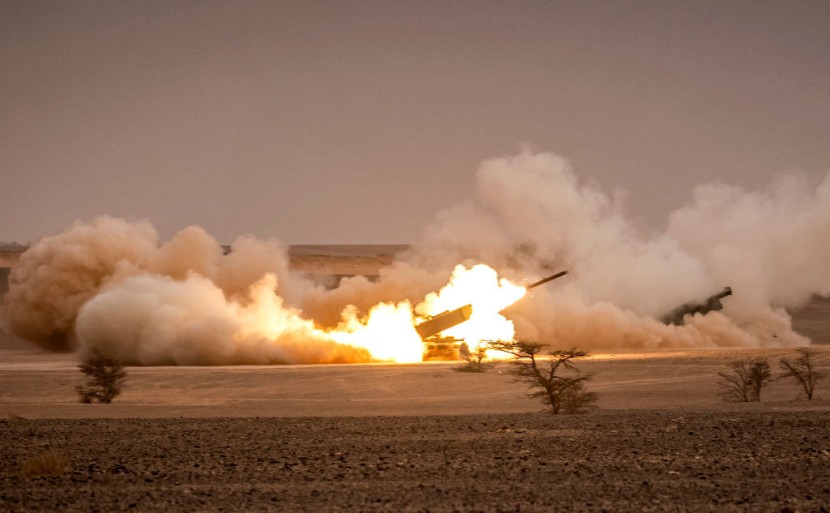
Since Ukraine got the US HIMARS MLRS system, it has been crowing against the success of the system against it. One of the questions is whether it has helped Ukrainian forces and done enough damage or if it's enough to stop a well-equipped Russian army.
US Rocket Launchers Aspects
The MLRS has four aspects: technical, tactical, and financial efficacy, or how it influences the tactics used by Ukrainian troops.
Along with the Javelin and the M777 light howitzer provided by the US to arm Ukraine as part of a $270 million deal, the Lockheed Martin HIMARS is the third platform for delivery of weapons, reported EurAsian Times.
Using satellite guidance, it employs a six-wheeler and six tubes to fire multiple types of explosives and munitions at targets up to 100 kilometers away.
A stand-off weapon system enables for greater distant attacks while allowing for less engagement with Russian soldiers in the east Donbas.
The Russian army has mauled Ukrainian forces with a better variety of stand-off weapons (longer ranged) like artillery, Kalibr cruise missiles, and other types of shorter ranged rocket launchers.
Additionally, it has waged war with an alleged high rate of casualties while continuing to advance its military objectives while suffering significant losses.
Due to the lack of effectiveness, loss, and exhaustion of its Tochka-U missiles, artillery, and ammo from the Soviet era, Ukraine critically needed this weapon.
The US refuses to provide Ukraine with a more advanced Army Tactical Missile System (ATACMS), a rocket with a 300-kilometer reach that can breach Russia's borders.
Read Also : Ukrainian Military Launches Hiroshima-Like Attacks Using US HIMARS in Kherson, Officials Claim
US HIMARS vs. the Russian 9A54 Tornado
The nearest Russian system in use is more powerful than the US HIMARS, and the Russian 9A54 Tornado might easily destroy the US MLRS.
Ukrainians have 16 US HIMARS MLRS systems, each of which can launch six 227 mm GPS-guided rockets with a range of 80 kilometers and an accuracy of 5 to 10 meters.
Russians have twenty 9A54 Tornado-S systems, which can shoot twelve 300 mm GLONASS-guided rockets at 120 kilometers with the same accuracy as HIMARS, which are available to Russian ground forces.
This Russian system outperforms the overly advertised US MLRS in terms of quantity, rocket size, range, and shot count. The BM-30 Smerch Multiple Launch Rocket System, initially employed in 2016, has been modernized.
One rocket costs $150,000, but the wheeled chassis/launcher for the US MLRS costs $5.6 million for each unit. A complete system, with ammunition and a wheeled truck, costs $6.5 million; 12 systems would cost $78 million.
Ukrainian Army Gets Mauled
While there are numerous recordings of successful HIMARS strikes, Russia asserts that it destroyed four of them between July 5 and July 20, including one support vehicle.
With high-precision ground and air-based weapons, Russian forces claim to have destroyed four launching ramps and one vehicle used for reloading. Several crew members perished between July 5 and July 20, and none of the US MLRS systems survived.
According to Lt. Gen. Igor Konashenkov, a Russian Ministry of Defense spokesman, two launchers were destroyed in Malotaranovka, one launcher and a support truck were destroyed near Krasnoarmeysk, and a third launcher was destroyed in the eastern suburb of Konstantinovka. The much-hyped US HIMARS MLRS system is not as capable as the Tornado, and it is a matter of time before Russia finds and destroys all of them.
Related Article: China Tests New Rockets Similar to HIMARS System With 500 Km Range









